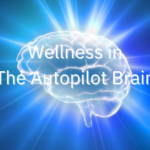More than a hundred recorded Webinars with exercises.
Optional consultation with Dr. Steven Stosny by Zoom, FaceTime, email, or any combination.
Take the Emotional Healing Test
$29 BUY
Selected Content:
Principles of Emotional Healing & Growth
Footprints on the Heart
Healing Identity
The Healing Message of Pain
Healing Painful Memories
Your Core Value Bank
Validation & Empowerment
Radical Self-Value
Choose Value over Power
Be Happy & Change the World
Soar Above
The Two Brains
How We Cope
Dynamics of Emotion Interaction
Create Value & Meaning
Core Value Narratives
Toddler Feelings, Adult Values
How to Access the Profound Brain under Stress
The Powerful Self
Weak Modes, Power Modes
Failure Signals, Correction Signals
Present & Future
Transitions from Weak to Power Modes
Power Mode Answers
How to be the Person You Most Want to Be
Changing Habits
Conditioned Responses
The Curse of A Christmas Carol (How change really occurs)
Forging New Emotional Habits
The TIP Process – A foolproof method of developing new emotional habits
Misunderstood Emotions
The Road to Psychological Ruin
Failing vs. Being a Failure
How We Feel, How We Look
Beware of Emotional Reactivity
The Poison We Drink
Listen to the Right Voice in Your Head
How to Spot Bad Advice
Effects of Your Behavior
For Success in Love & Life: Manage Disappointment
The Best Behavioral Guides
Validate Feelings, Act on Values
How to Feel Authentic
Improve
Appreciate
Connect
Protect
Flexibility
Emotional Healing Courses
Each course is amply supported by the science of emotion regulation.
Emotion regulation is basically using your emotions to act in your long-term best interests
Three Points
1. Human beings have extraordinary capacity to heal emotional wounds.
And outgrow the footprints they leave on the heart.
2. Overcoming emotional pain requires a healing identity.
People with healing identities focus on their resilience, strengths, and desire to improve their lives.
They do not give in to thoughts of damage, unfairness, bad moods, blame, or victim identity.
They certainly have such thoughts.
But for the most part, they resist the impulse to indulge them.
Instead, they keep focused on their desire to heal and improve.
3. Healing requires at least implicit understanding of the nature and purpose of painful memories.
Memories of pain play a crucial role in emotional well-being.
That purpose has nothing to do with the past.
Rather, the capacity to retain memories of pain evolved to keep us safe in the present.
Painful memories come equipped with a built-in healing mechanism, as long as our efforts to keep safe do not violate deeper values.
For instance, pain that results from death of a loved one runs a natural healing course, unless we try to protect ourselves from loss by withholding love from others.
The violation of the deeper value of emotional connection keeps the memory of loss painful.
But once we allow ourselves to invest value in other areas of life, the memories of the lost loved one become pleasant reminders of enriched life experience.
In other words, over time painful memories activate the powerful human capacity to heal, improve, and create value in life.
When we disrupt the natural healing process by focus on damage, unfairness, moodiness, blame, or victim identity…
Painful memories cause depression, obsessions, resentment, anger, addictions, abuse, or violence.
It’s absolutely crucial to identify with your deepest longing to heal, improve, and create value.
Removing Thorns from the Heart
Thorns in the heart are past emotional injuries that flare up at times of extended stress, increasing or decreasing intimacy, and threats of abandonment.
They motivate self-limiting defensive and avoidance strategies to lessen pain.
Thorns in the heart can take many forms.
Some originate in childhood, some in past adult relationships.
Some are inflicted in current relationships with partners or children.
A few examples:
- Abuse
- Boundary violations
- Betrayal
- Rejection
- Guilt
- Failure in work or career
- Fear of harm, deprivation, isolation
- Dread of humiliation.
The natural state for human beings is to heal, grow, improve.
It’s all part of an innate drive to create value, meaning, and purpose.
I call it, Core Value.
When I lecture on regulating emotions to reach core value…
Typically, a couple of people in the audience misinterpret.
They think it’s about “stuffing” feelings.
I remember one rather large man who stood up during my talk to proclaim, menacingly, that his therapist told him to:
“Feel your feelings, that’s what they’re for!”
Actually, that’s not what they’re for, any more than sensations are there for making us feel cold or pain-sensitivity is for hurting us or drives are for making us feel hungry or horny.
Painful emotions are not ends in themselves. They’re not punishments, and they’re not rewards.
Painful emotions are action signals; they prepare us to act.
They move us to heal, correct, improve. That is what they evolved to do.
Neurology, biology, and psychology contribute to emotional pain and to emotional healing.
All must be considered in healing programs. All are considered in these seven courses.
Dr. Stosny’s Blog on Psychology Today









